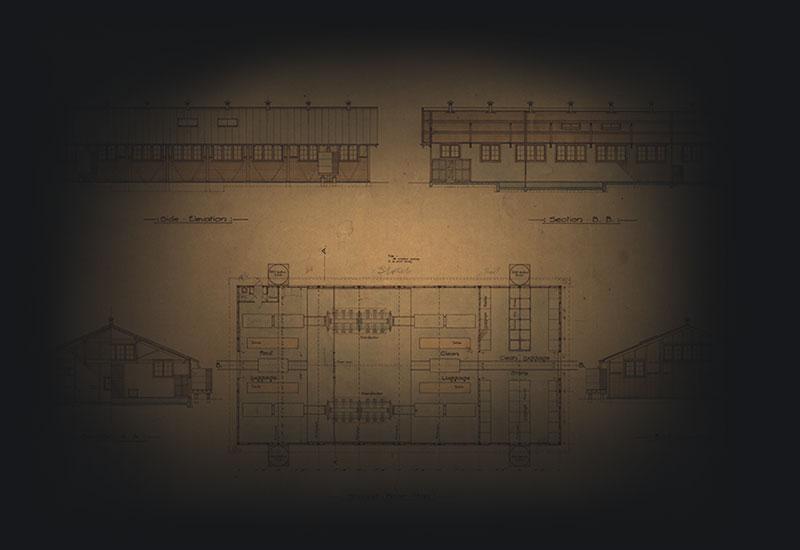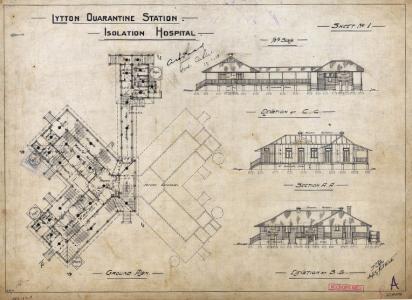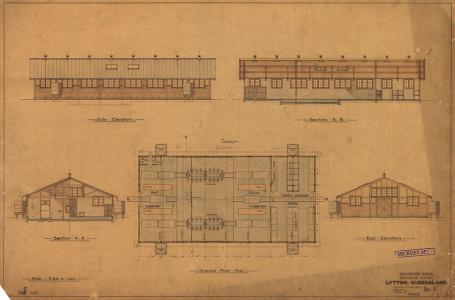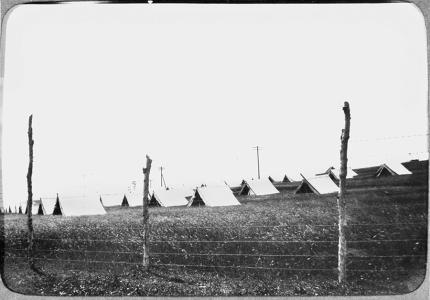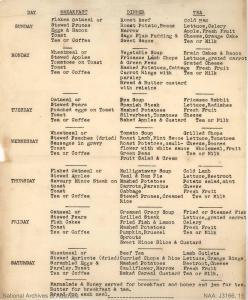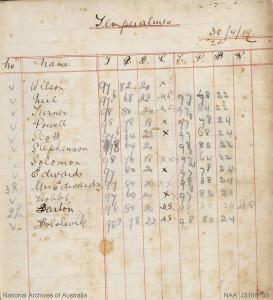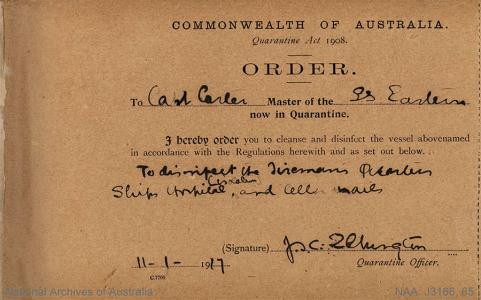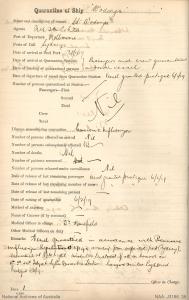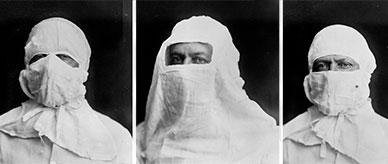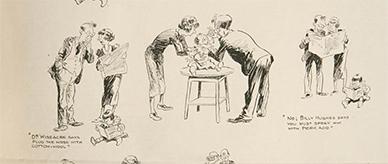Quarantining overseas arrivals has taken on new importance in the COVID-19 era. But stopping diseases entering the country has always been a major concern of the Australian Government.
For most of the 20th century, one of our most important quarantine facilities operated at Lytton in Brisbane.
Early quarantine in Australia
During the 19th century, quarantine stations were established at Australia’s major ports of entry. They were set up to hold ships, people and goods that might introduce diseases to the country.
For many migrants to Australia, their first experience of their new home was being detained in a quarantine station.
When the Commonwealth of Australia was established in 1901, it had the power to legislate for quarantine measures. But it wasn’t until 1909 that the government established a federal quarantine service, with the passing of the Quarantine Act.
The National Archives’ files on the Quarantine Act provide a behind-the-scenes insight into the development of the legislation. In one revealing memo dated 25 July 1907, Attorney General Littleton Ernest Groom writes:
The objection taken to these clauses is based on the point of view of the state in which the disease exists – the complaint being that the suppression of the disease is solely a matter for the state health authorities.
But take it from the point of view of a state which is clear, but is threatened with an invasion of disease from a neighbouring state. It is helpless to do anything a foot outside its own borders – though the only effective protection may be action at a considerable distance.
Only the Commonwealth could protect it – in that case – and that is what these clauses are intended for.
The Lytton Quarantine Station
Situated at the mouth of the Brisbane River, the Lytton Quarantine Station was built in 1913 and 1914.
It was essential in protecting Queensland against the Spanish flu pandemic from 1918 to 1920, and also guarded against smallpox, leprosy, cholera, typhus, bubonic plague and venereal diseases.
Thanks to a recently received series of records, the National Archives now holds a detailed history of the Lytton Quarantine Station.
Diving into the records, we can see that the station buildings were made from timber, elevated on low concrete stumps and topped with corrugated iron roofs. Tents were used to accommodate the influx of infected people during busy periods.
The complex included an isolation hospital, bath house, disinfecting block, laundry block, doctor’s quarters and a morgue.
The hospital wards were segregated into first-, second- and third-class areas, similar to a ship.
Life in Lytton
When a ship arrived in Brisbane, quarantine officers boarded it to inspect all passengers and goods. Anyone or anything suspected of carrying disease was landed at Lytton for fumigation and isolation.
Residents lived heavily regulated lives inside the station fences. There were restrictions on where they could go, what they could eat and the personal belongings they were allowed to keep with them.
Luggage and goods were treated in the disinfecting block, which was connected to the jetty by a tram line. The steam disinfector had attachments for chemicals such as cyanide and formaldehyde gas. Clothing and linens suspected of carrying diseases or pests were incinerated and passengers were supplied with new ones.
Once the vessel, passengers and crew was considered free of diseases and infestations, the quarantine officers ordered the vessel to be released from quarantine.
The station today
The Lytton Quarantine Station operated until the early 1980s.
Many of the original buildings remain intact. They are listed on the Queensland Heritage Register and are now part of Fort Lytton National Park.

